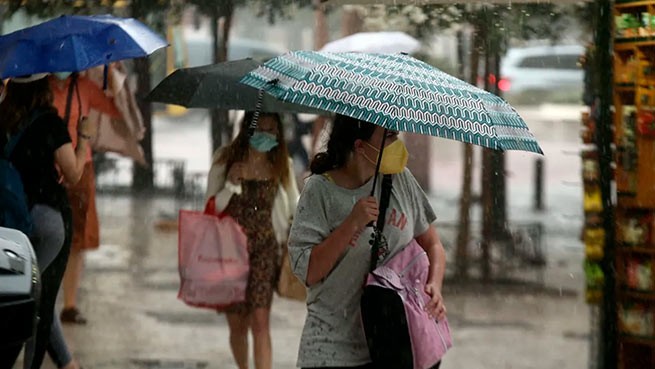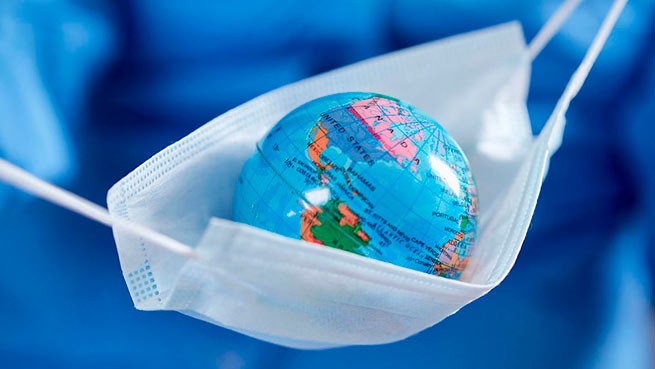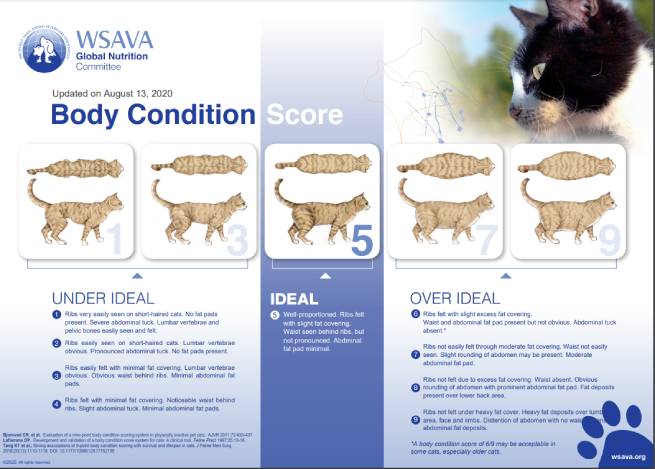A comprehensive guide for those who care about the health of their beloved cat from Pet Obesity Prevention and The World Small Animal Veterinary Association.
In 2022, 59% of dogs and 61% of cats were overweight or obese. However, many fluffy owners even like that their kitty is plump and imposing. And as for the pet itself, is it comfortable? Specialists warn: excess weight reduces the quality of life, significantly reduces life expectancy and entails many diseases.
Why do cats get fat
When the amount of food exceeds the needs of the body, the animal gains weight. But besides this, obesity is caused by factors such as:
- genetic defects;
- some pharmaceuticals;
- castration or sterilization – after such a procedure, animals are 3.4 times more likely to be overweight than unsterilized ones.
However, you should not refuse an important procedure, it is better to take care of the proper nutrition of your pet. According to statistics, more than 60% of cats gain weight within the first four months after surgery. The change in the hormonal background is to blame, which entails an increase in appetite and a decrease in energy losses. That is, cats have neither the desire nor the reasons to move a lot. Scientists at Cornell University name several other factors that can contribute to weight gain:
- inactive cats with little or no physical activity are 16 times more likely to be obese;
- cats living in apartments are about twice as likely to be overweight as animals living in large houses or outdoors;
- Obesity is more common in mixed breed cats than in purebred cats. At the same time, some of the most popular pedigreed cats are naturally thin (Siamese, Burmese);
- overweight is more often recorded in cats with a special diet for the treatment of other diseases.
How to determine obesity in a cat
There are no universal rules. The mass index should be considered by the doctor, the normal weight in cats depends on the breed, age and many other factors. The World Small Animal Veterinary Association has developed guidelines for determining whether cats are underweight or overweight. With it, the shape of the cat can be assessed on a 9-point scale, where nine points clearly indicate obesity.
Simply put, the physical form of a cat can be divided into 3 categories:
Too skinny: ribs and spine are visible or easily palpable, fatty tissue is almost not felt. The waist is very pronounced and somewhat narrower than the ribs.
perfect cat: correct proportions, fat slightly covers the ribs. The waist is slightly visible behind the ribs, but not pronounced. The abdomen is tucked up, the minimum fat layer.
Overweight: the ribs are hard to feel or not felt at all under the fat layer. There are fat deposits above the lower back and paws, on the muzzle. The abdomen is rounded, not tucked up, the waist is absent.
“If on this scale the owner understands that the cat has signs of obesity, or the owner regularly weighs the animal and sees a certain plus on the scales that surprises him, this is a reason to see a doctor. Cats that have given birth quickly return to their normal form. As long as lactation continues , the mammary glands will be enlarged, but it is difficult to confuse them with something or take them for fat “.
The danger of being overweight
Being overweight is a problem. And obesity is a disease that leads to a decrease in the quality of life of a cat, orthopedic problems, causes discomfort, pain and serious illnesses:
- Almost always, excess weight provokes a disease that does not show symptoms in the early stages – liver lipidosis *.
- A common consequence of obesity in cats is diabetes mellitus, a dangerous condition that is difficult to control. Its treatment is accompanied by a measurement of glucose, daily and several times, and insulin injections. Overweight cats are 4.5 times more likely to develop diabetes.
- Obesity can cause kidney, liver, heart, bladder and urinary tract disease, hypertension, arthritis and osteoarthritis, reproductive disease, skin disease, and even blindness due to high blood pressure.
- Obese animals are 7 times more likely to need veterinary care due to lameness caused by joint diseases, and “heavy cats” are three times more likely.
Research by scientists at Cornell University shows that overweight and obese cats live less than their normal weight counterparts. “Obese” cats are twice as likely to die at middle age, which for cats ranges from 6 to 12 years.
Recommendations of experts for weight loss of cats:
You can’t put a cat on a diet without consulting a veterinarian. Make sure that your furry does not have any pathological process or disease that caused the excess weight.
Think over the diet. The main goal is to find out the daily feeding rate. Average rates are indicated on the package if the animal is fed with ready-made food. If this is a natural diet, the doctor will help determine the daily rate.
You can’t force a cat to starve or significantly reduce the daily rate. Insufficient nutrition can lead to serious consequences and dangerous ailments, such as liver lipidosis (this disease occurs both from obesity and from lack of food, especially during prolonged hunger strike – 12-24 hours).
“The disease is very difficult to treat, so it is important to remember that cats should not starve under any circumstances.”
Feed your cat in batches, give up the practice of the constant presence of food in the cat’s bowl – this leads to uncontrolled ingestion of calories into the body. Cats, especially after castration, cannot control their appetite, so they consume much more than the body needs to function.
Count calories and nutrients. Cats are strictly forbidden to eat sweet food, and it is not recommended to give “human products” from the table. It is not only a calorie deficit that is important – you need to consider the needs for essential nutrients, macro- and microelements, minerals and vitamins.
Awaken the “predator” in your pet – it is very important to maintain instinctive behavior. You can stimulate the hunting instinct and physical activity with the help of games. Now there are many interactive toys for cats that will stimulate the hunting instinct and provide an intellectual challenge.
Increase physical activity – in association Pet Obesity Prevention say that the cat needs at least 15-20 minutes of activity in a day. You can not immediately, the cat can play or run several times a day for 5 minutes.
Encouraging the animal to move – a great opportunity to reduce weight. But intensive running can damage if the cat has diseases of the cardiovascular system. And remember:
“All critical conditions have some kind of background and concomitant factors: heat, high humidity, prolonged lack of free access to water, stress factors and a sense of danger that makes the animal actively run and hide. Such things can lead to acute respiratory reactions, for example, pulmonary edema, which requires urgent hospitalization.
Stroking: sometimes your pet needs affection, not food! Sometimes the owners perceive the demanding meowing of a cat as begging for food. However, he needs attention, tactility. Do not forget to stroke the cat, because pets, like people, can “seize” boredom and lack of attention.
Don’t Ignore Regular Vet Visits – once a year for animals up to 4 years old and twice a year after 4 years for preventive examination and basic diagnostics. Prevention is always easier than cure. Cats need to undergo an annual check-up, which includes a general and biochemical blood test, echocardiography and ultrasound of the abdominal cavity.
*Lipidosis of the liver (fatty degeneration) occurs as a result of a violation of fat and protein metabolism. May be seen in cats and dogs, but clinically more pronounced in cats. There are primary and secondary lipidosis, which develops against the background of other primary diseases. General symptoms: changes in coat (dullness, loss, dandruff and peeling of the skin); digestive disorders; change in the color and structure of feces and urine; yellow tint of the skin, mucous membranes (jaundice).







More Stories
ProNews: The government is methodically destroying the healthcare system in order to transfer it to the private sector
May Day strikes throughout Greece, operating hours of public transport are limited to the maximum (additions are being added)
Who likes an adventure holiday?